When Te Ara Mātauranga, Waihī Beach’s new library, service centre and community hub, opened this month, it already had a wairua (spirit) embedded within.
That’s because Te Whānau a Tauwhao hapū had been involved throughout the design of the new $5m facility.
Ōtāwhiwhi Marae chairman Reon Tuanau said Te Whānau a Tauwhao had gifted design elements, connecting the building to Ōtāwhiwhi Marae, the taiao (environment), and the coastal nature of Waihī Beach.
“This building is not going to start without a wairua,” Tuanau told guests at the July 1 official opening.
“It’s already got a wairua. It’s not going to start without a culture. It’s already got its culture embedded – and it’s just going to grow from there.”
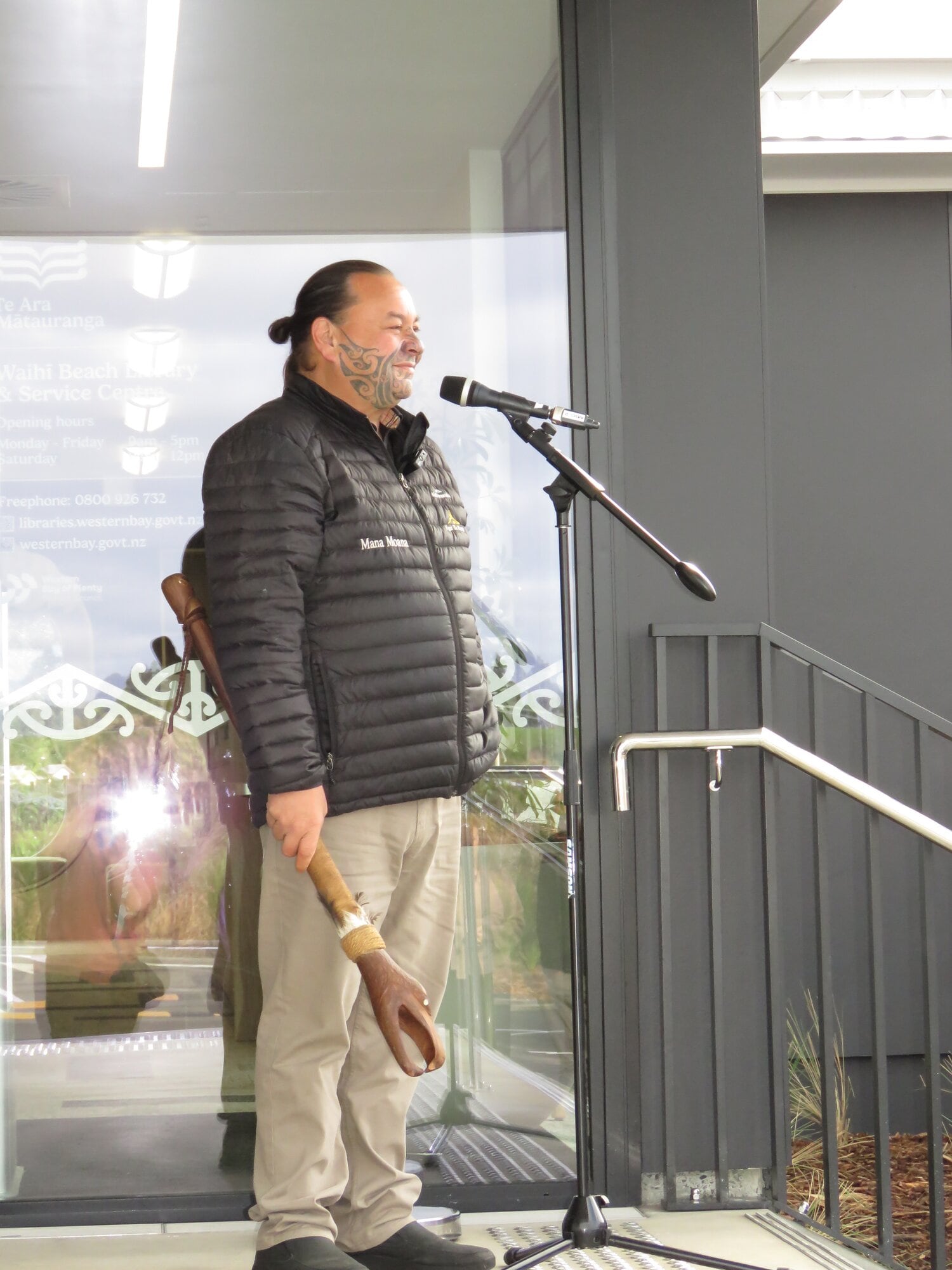
Ōtāwhiwhi Marae chairman Reon Tuanau telling guests at the official opening of Te Ara Mātauranga about the cultural elements behind the building’s design. Photo / Merle Cave
Māori wanted it to be more than a whare (building), he said. “We wanted the whole journey to involve the people, the whole community, and I think we’ve achieved that.”
The name Te Ara Mātauranga had “sparkle and spice, but something that could resonate well with people”.
“So this is where we landed. ‘Te’ means ‘The’; ‘Ara’ means ‘Pathway’; and ‘Mātauranga’ generally means knowledge – so we see it’s not just a house of books but a pathway towards achieving knowledge.”
Tuanau said extra work was done to redesign the branding. “The end result is a book laid out, but with the koru in there. The koru represents life, and it represents growth.”
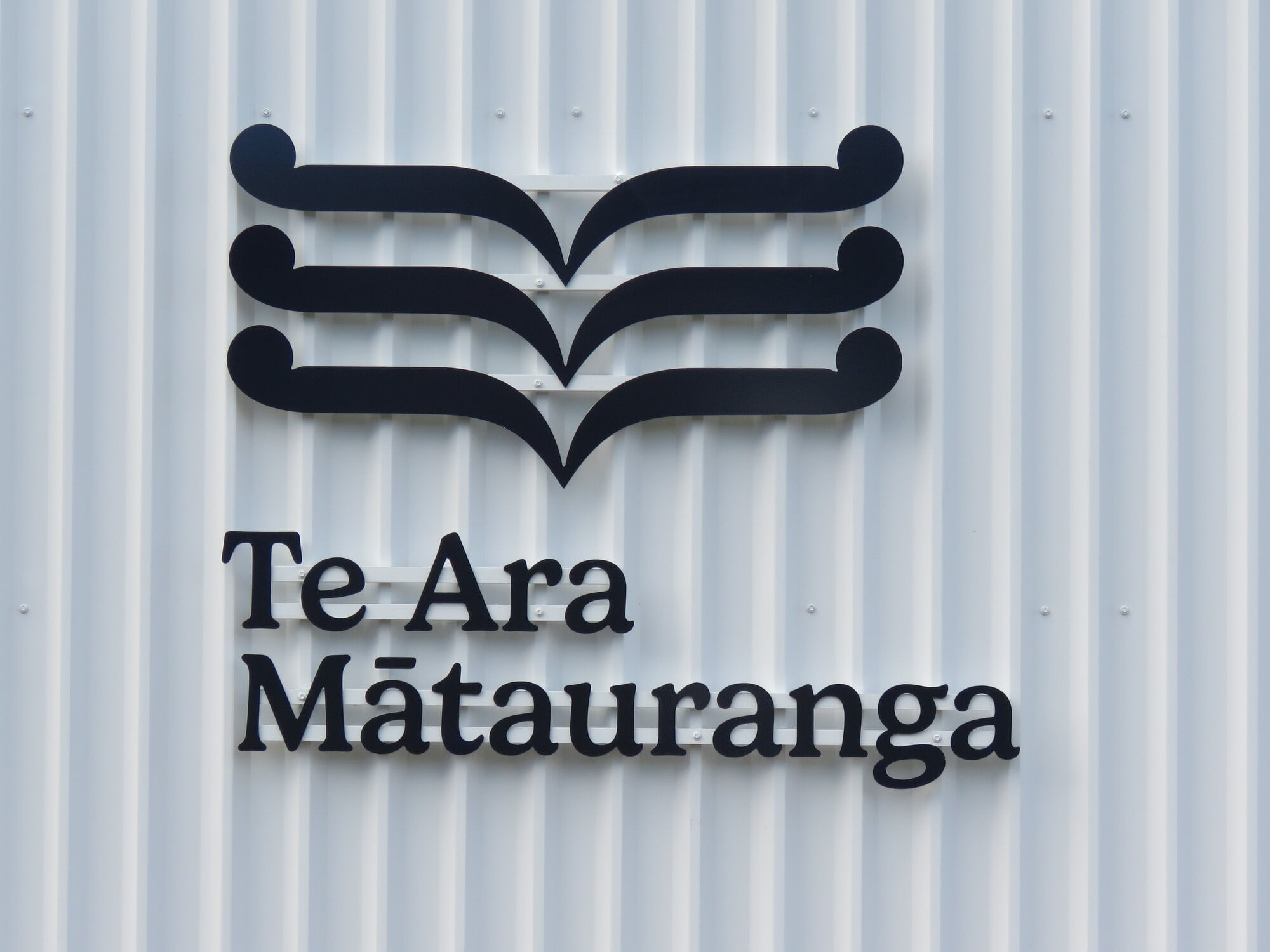
The brand is a book laid out with koru, which represents life and growth. Photo / Merle Cave
Many cultural elements were incorporated.
“If you look on the steps, you’ll see what we call the kōwhaiwhai pattern. This pattern was selected from our local wharenui at Ōtāwhiwhi from one of the rafters.
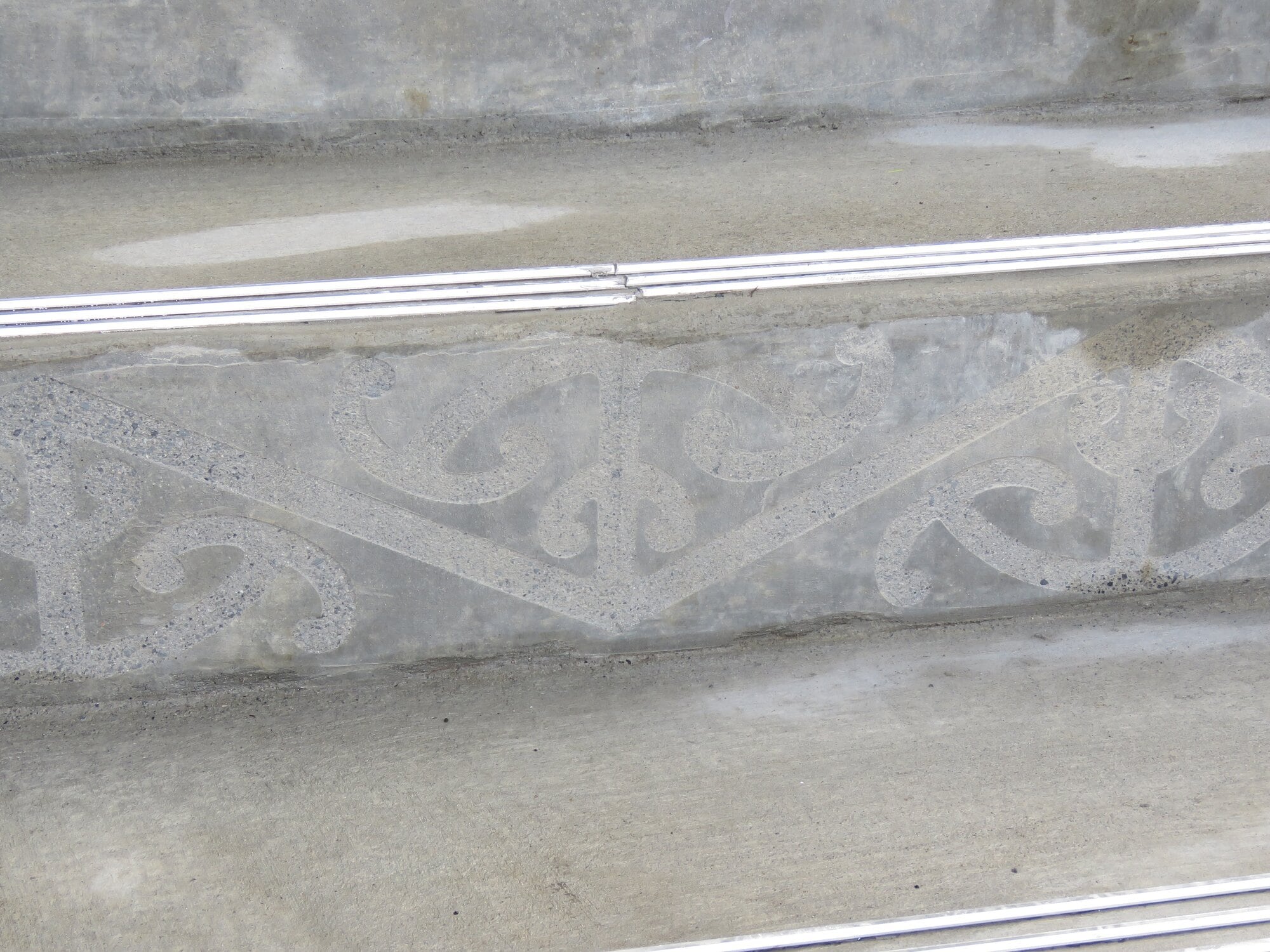
The kōwhaiwhai pattern on the new library steps comes from Ōtāwhiwhi Marae. Photo / Merle Cave
“We thought this was a way our people could come here and see ourselves related and connected to this space, but also we think it really depicts who we are and Waihī Beach people because of the Mangōpare – the hammerhead shark – depicted.
“It’s said if you catch a hammerhead on your boat, then after 24 hours put it in the water, it’ll swim away and carry on living. So it represents perseverance, resilience, never giving up, fighting to the bitter end, and that’s us here at Waihī Beach, I’m sure.”
Within the library are words and a pattern on three window panels. “The waiata just performed by our kids – ‘Hutia te rito’ – that whole song is captured in the middle of that pattern. What that song talks about is looking after our environment.”
Stemming from the middle of the waiata were whakatauki (proverbs) related to Waihī Beach, he said. “They are commonly known whakatauki we use all the time around here.”
The building’s three cubbyholes have names, “because we know that when we sit here at Waihī Beach and we gaze up to the ocean, one of the majestic things that stands out is Tuhua (Mayor Island)”.
“We feel that’s part and parcel of our identity here at Waihī Beach, so we wanted that incorporated.”
The cubbyholes were named after special obsidian that comes from Tuhua. “‘Tuhua’ is the black obsidian. ‘Paretau’ is the green obsidian, which is very rare around the world, and ‘Kahurangi’ is the red … again it’s about connection to our identity.”
The meeting rooms have Māori names too: Whānau, Kaitiaki and Kotahi.
“‘Whānau’ is family, but it’s actually about relationships, which are really important. If there’s meetings really aligned towards whānau, then whānau obviously will go into that room.
“If there’s a kōrero about kaitiakitanga, which is about looking after our environment, they’ll go into that room. ‘Kotahi’, which means ‘unity’, would be for if there’s a kaupapa that needs us to come together, be on the same waka.”
Tuanau said that, while some Māori names would be recognised, they wanted values to back them up “so it represents who we are”.
“It’s already got a wairua. It’s not going to start without a culture. It’s already got its culture embedded," Ōtāwhiwhi Marae chairman Reon Tuanau said of Te Ara Mātauranga. Photo / Merle Cave
Wanting a front desk that was welcoming and inviting, just like the staff, a cultural element had supported this. “A harakeke (flax) weaving has been designed and created by Marino Magee and her whānau of our community.” (See Katikati News next week).
Tuanau said the library’s seat was created with obsidian gifted by Te Whānau a Tauwhao. “The kids gathered the pebbles and shells [on it], and so that’s like a mauri, a life energy, that represents us. The place is called Te Wāhi whakairo, or ‘a place of reflection’, where you’ve got the mauri embellished in that seat from the work that’s taken to put it together. Hopefully, it inspires people to sit there and just reflect.”
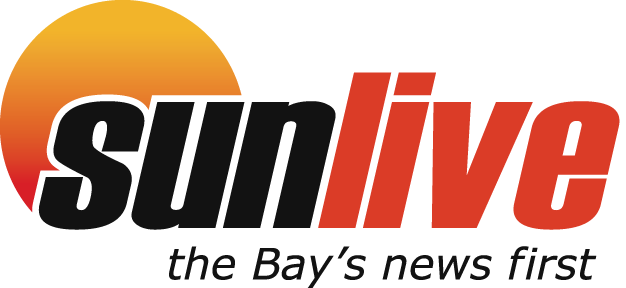
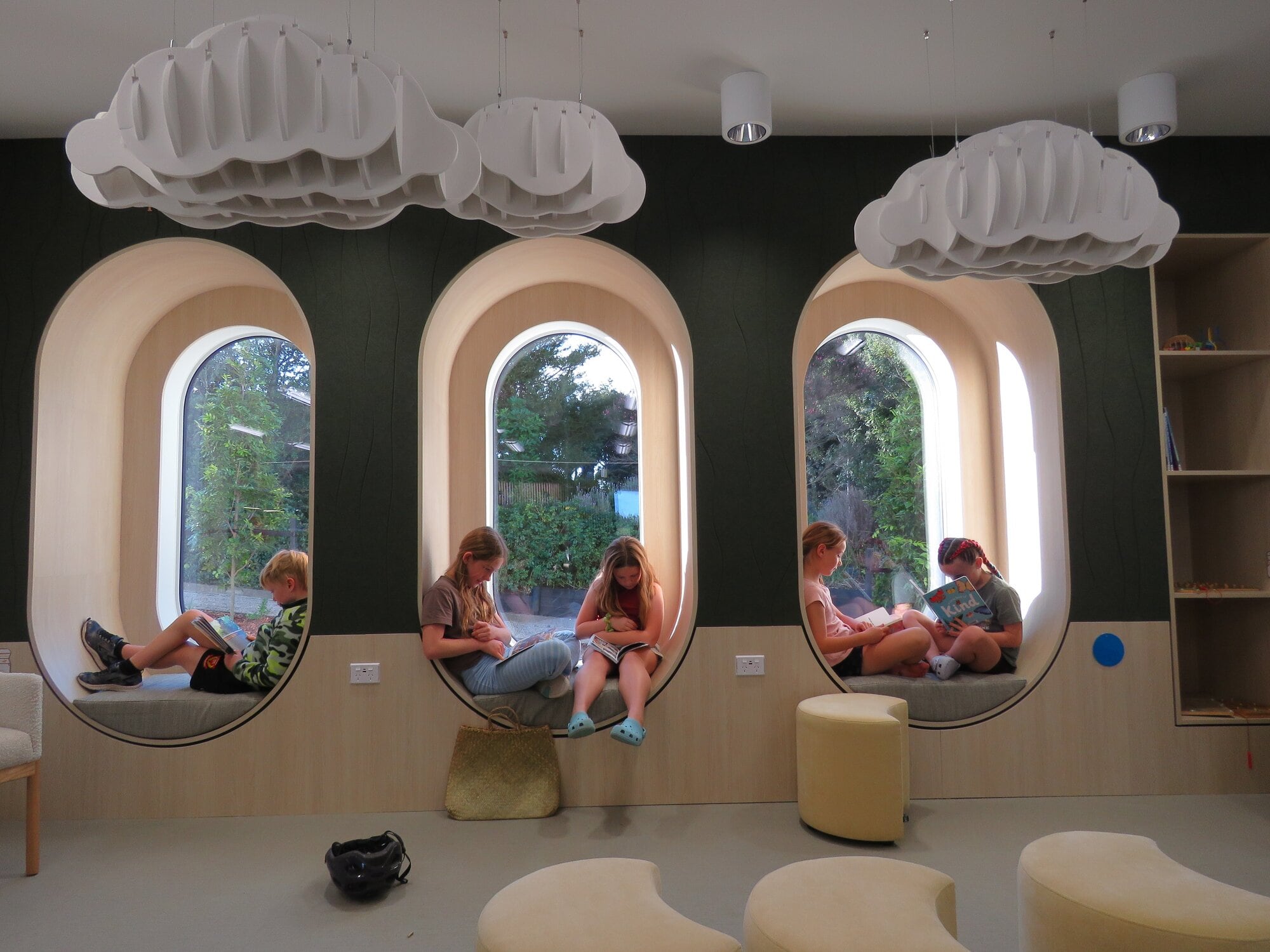

0 comments
Leave a Comment
You must be logged in to make a comment.